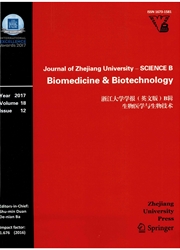

 中文摘要:
中文摘要:
在六米饭(Oryza sativa L.) 的根形态学的不同在钾(K) 效率变化的遗传型与三个 K 层次被学习:5 mg/L (低) , 10 mg/L (中等) ;40 mg/L (足够) 在里面水耕法的文化。词法“参数包括了根长度,表面区域,卷;侧面的根,以及罚款(diameter【0.2 公里) 数;厚(diameter】0.2 公里) 根。结果显示所有遗传型的根生长在低 K 下面被减少,但是中等 K 缺乏增加了有效遗传型的根长度。在缺乏;中等 K 层次,所有有效米饭遗传型比低效的开发了更多的好根(diameter【0.2 公里) 。两个都,好根数;根表面区域被发现是最好的参数在米饭描绘 K 应力。根据根形态学,当成长在时,更高的 K 集中在有效遗传型的射击被注意中等;缺乏的 K 铺平,显示根形态学参数涉及为 K 的根举起;在直到射击的 K 的 translocatio。K 缺乏影响了不仅根形态学,而且根超微结构。高度有效的遗传型的根为根膜损坏有更强壮的忍耐到 K 缺乏的应力,;能维持发达的根建筑学适应低 K 生长媒介。
 英文摘要:
英文摘要:
Disparity in the root morphology of six rice (Oryza sativa L.) genotypes varying in potassium (K) efficiency was studied with three K levels: 5 mg/L (low), 10 mg/L (moderate) and 40 mg/L (adequate) in hydroponic culture. Morphological parameters included root length, surface area, volume and count of lateral roots, as well as fine (diameter〈0.2 mm) and thick (diameter〉0.2 mm) roots. The results indicate that the root growth of all genotypes was reduced under low K, but moderate K deficiency increased the root length of the efficient genotypes. At deficient and moderate K levels, all the efficient rice genotypes developed more fine roots (diameter〈0.2 mm) than the inefficient ones. Both fine root count and root surface area were found to be the best parameters to portray K stress in rice. In accordance with the root morphology, higher K concentrations were noted in shoots of the efficient genotypes when grown at moderate and deficient K levels, indicating that root morphology parameters are involved in root uptake for K and in the translocation of K up to shoots. K deficiency affected not only the root morphology, but also the root ultra-structure. The roots of high-efficient genotypes had stronger tolerance to K deficient stress for root membrane damage, and could maintain the developed root architecture to adapt to the low K growth medium.
 同期刊论文项目
同期刊论文项目
 同项目期刊论文
同项目期刊论文
 期刊信息
期刊信息
